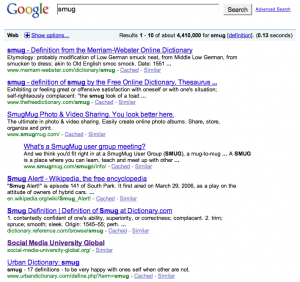The title of this session is Next-Generation Consumer Engagement — New-Age Solutions to Advance Consumer-Driven Health.
Jim Mault, M.D., from Microsoft started with an illustration, asking how many people know how to access credit card transactions online vs. getting access to our immunizations or cholesterol test readings. Not surprisingly, only about half of the health geeks here knew how to get these health records. The absurdity defies explanation.
You’re already suffering the risk of someone (a hacker) getting your online health information, but getting none of the benefits.
Need Portability and Interoperability to realize the potential benefits. In HealthVault, Microsoft is developing a health info ecosystem, much like Facebook and MySpace did for digital photography. Unlimited opportunity for you to share your data, on your terms, with whomever you want.
John Young from CIGNA says lifestyle accounts for most of the risk of chronic conditions. He says it’s not a decision of whether to do consumer-driven health care, but how. By year end 59 percent of employers will be using consumer-driven models. Companies need to design their plans as an “on-ramp” to promote consumerism. He says consumerism could save about $2,300 per employee per year within 5 years, without cost shifts. CIGNA’s offering is CIGNA Care Connections, and he says the key is making it simple. Better choices = improved health and lower cost. Incentives drive better decisions. Pharmacy tools enable consumers to compare specific costs for their particular prescriptions. Next up is a Cost of Care Estimator. Patients will get much more interested in how much the bill will be when they have HSAs and similar plans.
Need to change language; instead of “coinsurance” need to say “amount you pay after the deductible.” The goal is to build confidence and self-sufficiency among consumers.
Craig Froude from WebMD Health Services works with a lot of big employers and health plans with the goal of improving health outcomes and lowering health care costs. They create an individual profile for each IBM employee, for example, and import lots of data from various sources into the system without the employee needing to enter information. Based on these data he says they deliver personalized, targeted information and recommendations. It’s called WebMD Health & Benefits Manager. He says 1.8 million people took a risk assessment last year, and 43 percent started an exercise program, 40 percent changed diet, but 26 percent reported making no changes. His team’s goal is to increase the proportion of users actually taking action.
Vince Kuraitis, the moderator, concluded the presentations with what he calls “5 New Realities”
- Personal control of PHI displaces health care incumbents and puts patients in charge. Emerging reality: Patients say: “It’s my data. Hand it over. NOW.” Now HealthVault and Google are making it practical for patients to exercise the rights they already have.
- Proprietary IT and processes give way to open standards and collaborative business models. Collaborative Care Management Networks are required to coordinate care, just as you don’t worry today about using a non-network ATM (other than some extra fees.) But 70 percent of PHRs are not interoperable.
- The Personal Health Info Network facilitates incremental advances toward interoperability and liquidity. This has been moving very slowly, but now we’re moving from Ready, Aim, Fire to Ready, Fire, Aim
- The jury is in: patients will use PHRs. Conventional wisdom says adoption rates are low, but the emerging reality is patients value integrated PHR systems. Kaiser has 30 percent adoption and Group Health has 50 percent.
- Google, Microsoft and others are collaborating in creating a new ecosystem. Conventional wisdom says it’s a battle between the titans, but the emerging reality is “It’s a new ecosystem!”
In the ensuing discussion…
Continue reading “Microsoft, WebMD and CIGNA on Consumer Medical Data”
























